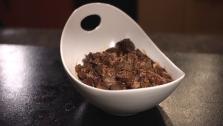Food Grade Can Seamer Lubricants for Safer Seaming
Ensuring good lubrication of your can sealers plays an important role in the production of secure can seams. But, using non-food grade lubricants can contaminate the products being canned. This can have serious consequences.
In today’s discussion, we will talk about the possible consequences of using lubricants that are not suitable for food. Aside from that, we will also discuss why it is important to use food-grade lubricants in your can seamers. Let us start with a short description of what lubricants are in the next section.
What are Lubricants?
Source: https://www.pinterest.ph/pin/757660337292406303/
Commonly known as lubricants or lubes, lubricating oils help overcome the common lubrication challenges. These challenges include the following:
- Premature bearing failure
- High operating temperatures
- Increased risk of contaminant ingression
- High operating speeds
Moreover, lubricants help in the successful lubrication of the moving components of your can seamers. This protects your machines against unscheduled stoppages and the expensive wearing of parts.
What are the Consequences of Using Non-Food Grade Lubricants?
#1 Food Safety Risks
Since the majority of can sealing machines lose oil in the can seaming process, non-food grade lubricants threaten food safety.
The presence of excess grease and lubricant can accumulate above the cans on the upper turret or roll bearings of the can seamer. When this happens, the possibility of the grease/lubricant dripping off the moving parts of the can seamer increases. If the non-food grade grease or lubricant enters the cans during the seaming process, the products will now be considered “adulterated”. Thus, they are not fit for consumption anymore.
#2 Costly Production Crisis
Contamination incidents in the whole production process results in major problems for operators including the following:
- They have to destroy the whole packaging and product batches. They also have to stop the production lines for a long time to clean the can seamers.
- Since the operation will be stopped and the production delayed, they will miss delivery deadlines. This will strain customer relationships which threaten repeat purchasing.
- The operators may not notice the contamination incident until the products are on the shelves. This endangers the health of the consumers which will incur further costs due to damages to the reputation of their brand. They also need to perform product recalls which are expensive.
Tips For Increasing Food Safety
Below are some tips for significantly increasing food safety while minimizing the impacts of contamination.
For Total Loss Lubrication Systems
Look for H1 food-grade greases and lubricants for your can seaming machines.
H1 food-grade greases and lubricants can help operators meet the lubrication requirements of total loss lubrication systems. Moreover, these greases and lubricants are formulated using approved base fluids and additives to ensure the safe lubrication of your can seamers. This is because they are odorless, tasteless, and colorless. Thus, they will not cause food contamination during the can seaming process.
For Recirculating Lubrication Systems
If you are operating recirculating lubrication systems, use synthetic food-grade lubricants for your can seamer’s gears. They can ensure food safety and maintain the efficiency of your operations while minimizing the effects of dripping lubricants from the machine’s seaming rollers.
Why Should You Use Food Grade Lubricants?
Source: https://www.pinterest.ph/pin/193443746476394971/
#1 To Prevent Corrosions
Using trusted food-grade lubricants for your can seaming machines can offer exceptional lubrication. This is even when food sauce, water, or juice are present. A canning lubricant is said to be effective if it can handle water very well by absorbing it.
Removing water from your can seaming machines through food-grade lubricants minimizes contact staining. Thus, preventing rust, corrosion, and heavy pitting. This maintains the reliable performance of your can seamers while improving food safety.
#2 To Protect Your Production Line & Brand
The following factors constantly increase the threat of accidental contamination from lubricants:
- Open cans during the can seaming process
- The high consumption of lubricants
- The fast movement of the can seamer’s components
If you use food-grade and H1-approved lubricants for your can seamers, not only will you guarantee good lubricant performance but also food safety. Food-grade lubricants improve the cleanliness of your can seamers. This leads to a smooth flow of your production line while reducing the impacts of contamination. Thus, protecting your brand from possible damages caused by lubricant contamination.
Conclusion
The threat of contamination caused by lubricants is worse than the one caused by badly seamed cans. Because unlike lubricant contamination, badly seamed cans offer warning signals so they do not come undetected.
Thus, to guarantee the efficient and safe operation of your can seamers, you need to use food-grade greases and lubricants. Not only that, effective lubrication reduces corrosion of your machine’s components. This minimizes the risk of contamination through rust. Maintain the good reputation of your brand. Choose the right lubricants for your can sealers.
Category: Food.Fun.Stuff.









